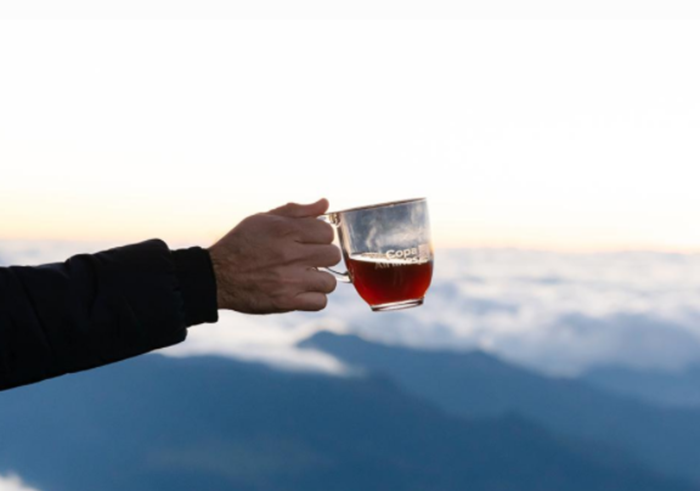After closing a deal with Wilford Lamastus earlier this year I decided to pay him a visit and acquire some of his special Geisha coffee beans. Not from the batch that sold for over $1,000 a pound setting the new record last year but a great bean grown at his high altitude plantation. Wow, what a great cup this morning.
It wasn’t so long ago that coffee received very little scrutiny from imbibers in the United States. A metal can of pre-ground beans was standard in most homes until the transition of coffee from commodity to craft in the 1990s and early 2000s, thus enabling coffee-growing regions around the world to showcase the subtle flavors that differentiate them from everyone else.
As the third wave of coffee has become more mainstream, Panama has quietly staked its claim as a force to be reckoned with thanks to growing the renowned Geisha coffee bean, which can sell for over $1,000 per pound.
This coffee originally hailed from Ethiopia (purportedly from a region called Gesha, hence the name) before taking root in Central America. The mixture of the right altitude – not too high, not too low, volcanic soil, and the microclimates of Boquete, where the highest-ranked Geishas are grown, yielded a near-perfect bean. Geisha is grown elsewhere in Latin America and the rest of the world, but Panama’s varieties consistently rank the highest in competitions.
To put it in perspective, Panama’s Geisha coffee continues to set records year after year. First in 2004, when a washed Geisha from Hacienda La Esmeralda sold at auction for $21 per pound, blowing past the existing record of $4.80 per pound. By 2017, these beans were selling for $661 per pound, finally surpassing four figures in 2019 at $1,029 per pound. In only 15 years, Geisha from Panama redefined the entire concept of luxury coffee.

Remarkably, this low-yield variety was ignored for decades due to the intense work that needs to be invested to get it to grow. It requires special fertilizer, careful pruning, and of course, a home perfectly situated between two oceans. But growers like Hacienda Esmeralda, Cafe Don Benjie, and Lamastus Family Estates had the vision and passion to recognize Geisha’s potential, and today they have been rewarded for their hard work.
Geisha beans do plenty of the work themselves, too. Considered a tea-like coffee, Geisha is noted for its delicate floral flavors and surprising depth, with an extended finish. Even those that wouldn’t consider themselves coffee highbrows find an immediate affinity within the first sip. The superior flavor, combined with the scarcity of finding Geisha, and the amount of work that goes into producing it, explains why the price tag is so high.
In an effort to promote the incredible strides Geisha has made in the coffee industry, and to encourage visitors to Panama to look beyond the Canal, food entrepreneur Jorge Chanis started La Cosecha, an event now entering its fourth year. It was created to celebrate the harvest and enable coffee lovers from the world over to more easily experience what Geisha coffee is all about, from the nuances of growing this delicate bean in the Panamanian highlands, to the way the land and local culture reflect the uniqueness of this coffee variety.

Coffee being poured at Lamastus Estates
LA COSECHA
During the annual four day event, guests get to know Geisha coffee from every angle to can further expand upon the flavor profile that makes this bean worth such a premium price. After spending a brief stint in Panama City, guests head to Boquete to explore coffee farms, attend lively but lavish dinner parties, and even take a pre-dawn hike up Volcán Baru to experience seeing both the Atlantic and Pacific oceans at once as the sun crests the horizon. La Cosecha ensures participants come away with a holistic understanding of just how unique Geisha coffee is in the context of the people producing and the land where it grows. Chanis knows that sipping on Geisha’s fragrant, floral, almost tea-like brew is made all the more magical by doing so from 11,400 feet.
In 2021, La Cosecha will be taking place during March. Adventurous travelers can take part in the cupping classes, waterfall hikes, and coffee and food pairings that help elucidate what Geisha coffee has done for Panama, and what Panama has done to ensure this one-of-a-kind bean could become available to consumers.
Fortunately, Geisha coffees from Panama are available for purchase outside of the country, from Japan’s Saza Coffee to California’s Klatch Coffee, but knowing that there is so much more to Geisha than the flavor itself, traveling to Panama to experience its production firsthand is a worthwhile trip for any coffee aficionado. Getting to socialize with the families who have devoted so much time, energy, and love into perfecting the world’s most expensive coffee bean is an experience unlike any other.
Source: Ali Wunderman for Forbes
Stay Safe!!
